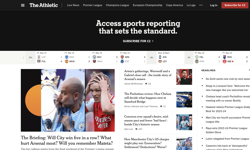Defining customers can be difficult for a local newspaper. For a start, they’re not called customers; they’re readers – unless you work in the advertising department, of course. So the whole concept of CRM – customer relationship management - is linguistically difficult for circulation managers to get hold of. It just doesn't sound right.
Secondly, readers have traditionally had an indirect relationship with the newspaper. Philip Preston, marketing director at Archant, says, "The only customer relationship we had was with the newsagent, really." Local papers sold their copies to retailers, and handed over responsibility for dealing with individuals at that point. Though they might liaise with newsagents to find out what was selling, or what type of customer was buying on what days, they didn't deal directly with their readers. That was the newsagent’s job.
Philip Preston says that, even now, Archant can't use its newsagents’ data proactively, though the group does use it to suppress names where they might otherwise market direct delivery to a newsagent’s existing customers. So, while newsagents represent an excellent channel to market, they’re also in one sense a roadblock between the paper and the reader. The publisher actually doesn't know who is buying and reading it.
Chris Pennock of Johnston Press believes that newspapers have been heavily handicapped by this lack of knowledge. "Fifteen years ago," he says, "we had little information and made even less use of it. We could print our product, stick it on the street, and it would sell. Now you need to have a much more sophisticated relationship with your readers." That’s one motivation that has been driving the installation of CRM systems in many regional newspaper groups.
Market Research
A first step towards knowing the reader is the carrying out of market research. Even fairly broad research surveys can give editors some surprises. For instance, when the Shields Gazette carried out research, it "gave us a few raised eyebrows," says Martin Rooney, the paper’s newspaper sales manager. It found out that 66 percent of readers were Newcastle United fans even though the paper is based south of the Tyne. Focus groups are now being actively used at many newspapers to get a better feel for what local people want to see in their newspaper, and when they want to see it. But while such activities produce good aggregate data, they don't allow individual readers to be targeted.
Of course, in some ways the individuality of readers is beside the point. Martin Rooney says, "You can't tailor the newspaper to individuals or achieve a single target demographic. We can't pick and choose our customers like a supermarket; we have messages for all of them." So, although local newspapers have got to know their readers better over the past few years, they have to accept that their readership is defined best by geography – it’s no good trying to serve only particular demographics.
None the less, to move from mass medium to being able to target individuals remains a tempting proposition. For Martin Rooney, that’s the next stage. And by the middle of 2007, he says, "We’ll be able to target specific people, and people who meet specific characteristics," sending them reader offers or special subscription rates. While the newspaper will remain the same for all its readers, individuals will see different direct marketing offers depending on their characteristics and preferences. The installation of CRM software should enable the Shields Gazette to keep reader details, and for the first time, interact directly with its individual readers.
But most CRM software has succeeded in companies where there is one kind of customer – a retailer, say, dealing with individuals, or a machine tool company dealing with corporate purchasers. Because the local paper has two very different customer bases – those buying newspapers, and those buying advertising – it’s been difficult to get a single database which will cover both. And the plot thickens where a reader is also a customer for the classified ads – in which case their details usually end up on two quite different databases.
Data silos
The choice of CRM software has exacerbated this division. Available third party systems tend either to focus on single operational areas such as subscriptions management (eg CCB’s Subsman) or canvassing, or else are generic and need substantial customisation to be fit for purpose. Most local papers which have achieved anything have used a third party system but carried out extensive customisation. Even the Atex Matrix system, used among others by Johnston Press, needs to be customised though it has been developed for the print media sector.
Chris Pennock points out that "traditionally, there’s no one in a newspaper for whom CRM is a key responsibility: it’s split up between different departments – promotions, ads, delivery or sales." That leads to each department keeping its own customer database – a ‘data silo’ in IT-speak – and prevents the newspaper from setting up a single overarching database. The problem is not just that the details are being kept on different systems, but different details are being kept, so you can't just merge the two databases, he says.
Promotions databases and direct delivery databases are still separate at many papers, leading to data integrity problems (for instance duplicate details for customers, but with very slightly different spellings of their surnames). Migrating from these operational systems to a single database requires a huge data cleansing and de-duplicating effort – not to mention a central decision on exactly what data is to be kept, and how each field is to be described. As so often with IT, the devil is in the detail.
Until now, perhaps, the need for CRM wasn't very pressing. But now, direct delivery and the internet are changing the market, creating a direct link between the newspaper and its readers.
As supermarkets expand their market share, and retailers stop supporting paper rounds, newspapers are taking over more responsibility for delivery. The Shields Gazette, for instance, saw a 239 percent increase in direct deliveries last year. Some of this was organic growth, but most of it was replacement of retailers who have withdrawn from the market.
Martin Rooney thinks this is an important point at which the newspaper can rethink its position. "Direct delivery gives us an opportunity to communicate better and more directly with our customers, and to increase the value of the service", he says. Taking responsibility for delivery will force local papers to upgrade their CRM systems.
The internet also changes the newspaper’s relationship with readers, says Philip Preston. Readers are accessing the website and interacting with the newspaper directly – not through a retail channel. And not only the data requirements, but the ways in which data can be gathered, have changed. "The great benefit of the internet is that data collection is almost automatic," he says. That enables newspapers to acquire customer data much more cheaply and effectively. (It’s no surprise then that many newspapers which are offering direct delivery are selling the subscriptions via their websites.)
Single customer view
But most newspapers are still a long way from getting the ‘single customer view’ that is Nirvana in the CRM industry. Web users, subscribers, and advertisers all see their details headed for separate databases, never to be integrated. A single view of the customer – say an individual who subscribes, and has also used the classifieds to sell her motorbike – is a long way away. At the Shields Gazette, the advertising and subscription systems are completely separate – they never meet in the middle.
Martin Rooney admits that "it’s incredibly difficult to achieve a single customer view." Philip Preston goes further and states "I think ‘one view of the customer’ is pie in the sky." He points out that even Norwich Union, a well-regarded local company, doesn't really have this - "they keep buying other companies, and they don't have one view of the customer, they’re all on different databases." With a business model that is much more complicated than selling insurance, how could a newspaper get it right?
Local newspapers have certainly invested a good deal in CRM over the past few years. Collection of customer data has become more common, and there is more data about. But Chris Pennock admits that "while we have a lot of information, it’s in a chaotic state." The real challenge isn't about getting the data in the first place – it’s about making use of it. "Getting a joined up strategy is a challenge," he says.
Many newspapers still have difficulty linking the data they have on internet readership with their print product readers. That may partly be a timing issue; many CRM systems were specified before the internet became such an important part of most newspapers’ operations. A second generation of CRM is needed to tie these two together.
So currently, rather than going after the ultimate target of the single customer view, most papers seem to be taking tactical decisions in this area. For instance, the Shields Gazette will be merging the reader offers and direct delivery data. Currently, the system can't link purchasers of holidays, or photos, with the delivery database, but when the system is updated, in the first half of 2007, they’ll be able to do so.
Getting the basics right
The regional newspaper sector is littered with over-ambitious CRM projects that failed; so perhaps going back to tactical basics makes good sense. Chris Pennock says that Johnston Press "probably started by being a bit too ambitious, and we’re going back to square one – how can we make better use of the data within the business, and make better use of it working with third parties?"
He believes one of the worst mistakes is getting too much data without having a strategy for using it. "The first rule of data is, make sure you have a use for it first," he warns. Decisions on how much data and how to store it have to reflect its use. And again, that’s where the quest for the single customer view may not be helpful; just how much do you need to know to provide someone with a newspaper on their doorstep?
Philip Preston points out that all data has a cost. It needs to be regularly updated and maintained; compliance with the Data Protection Act also requires the publisher to invest in systems and people. Although Archant has just started a Reader Rewards programme specifically focused on collecting data (which is covered elsewhere in this issue), he is adamant that it is not just a data collection project.
"We won't just let the data sit there," he says. "What’s the point? It’s expensive to collect. Just having it is no good, and can be counterproductive – you need to know clearly what you want to achieve."
The big advantage of such a system, though, is that reader information is continually updated as they use the system. He admits that offline methods are often fallible in this regard - "We were collecting data through promotions, but it gets out of date so quickly."
Opportunities for targeting
Martin Rooney points out that possessing customer information enables a newspaper to change the way it interacts with its readers. For instance, the Shields Gazette can now text many of its subscribers with promotions and special offers. "That pushes up our ancillary offers," he says, "such as photo sales, which have done particularly well."
Because he’s able to pick and choose which readers to market to, he is able to target more clearly and save promotion costs. "We can collect people’s information and tailor our offering," he says. For instance, holidays can be marketed to those who have already taken a reader holiday before, so that an SMS message can bring in as much business as a whole page in the paper. It’s marketing to just 15,000 people, instead of the whole 60,000 reader base – but these are the most likely people to buy. "This will help us manage paginations," he says, "as well as helping to manage the administration of the offers."
There’s no doubt that newspapers need to use better CRM to push subscriptions and increase their copy sales. And where this has been done, often tactically, it’s working. That’s just an incremental change. But the next generation of CRM could change things much more dramatically than that.
The future
By changing the relationship between newspaper and reader from an indirect to a direct one, CRM offers the possibility of broadening the newspaper’s channels and opening up entirely new areas of operations. Philip Preston says, "If regional papers ever got their act together, they could compete and offer data alongside the big boys like Experian." Areas such as affiliate marketing and direct marketing could become big money spinners for newspaper companies. Advertisers are already using Archant’s direct marketing services, as well as advertising in the papers - the same customers, but enjoying an expanded range of media, moving into below-the-line promotions. "Database marketing is an area of real growth," he says.
Newspapers can strike new partnerships, too. "This isn't just about selling more newspapers", says Chris Pennock. "There is an opportunity to work with blue chip organisations, brand enhancing organizations." The newspaper brand has already expanded to cover websites as well – now, email, text, and direct mail can all be added to the media mix.
Martin Rooney adds, "once you’ve got your systems right, there’s no limit." The newspaper could begin marketing anything on its own account, as well as for advertisers. However, he says, the real constraints are not in the IT system or the data, they’re strategic. "We provide services which enable people to make buying decisions of their own accord; we’re a trusted brand." No newspaper would want to exploit that position of trust in such a way that readers’ relationship with the title was negatively affected. Opportunities need to be chosen carefully.
Will local papers take full advantage of the new opportunities afforded them? It’s difficult to say. Certainly, up to now, they don't seem to have been completely successful in implementing CRM. "I don't think the regional newspaper industry is at the forefront of CRM," Philip Preston says; "other sectors have passed us by."
I wouldn't like to make a bet on newspapers becoming a direct fulfilment channel with a one hundred percent database of every purchaser – however casual – and it seems unlikely that newspapers will ever become subscription-only products. But the world is definitely changing. CRM will have a much more important place in regional newspapers’ operations in future. And perhaps the mantra of the ‘single customer view’ will be replaced by a focus on the real usefulness of customer data – and the way that a brand can develop across print and internet media now that it has started to establish a direct relationship with its readers.
FEATURE
CRM and Regional Newspapers
Having too many customers is rarely a problem; having too many types of customer can be. Readers, newsagents, advertisers - display and classified - are all distinct customer segments managed separately within newspaper centres. Andrea Kirkby looks at what relevance CRM has in this context.










